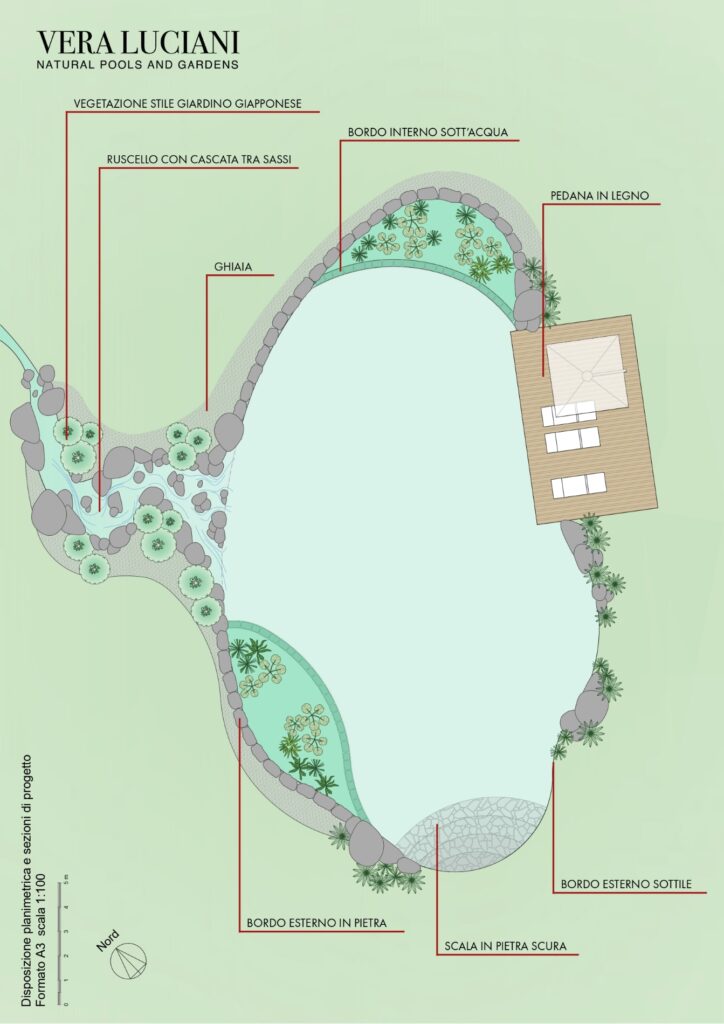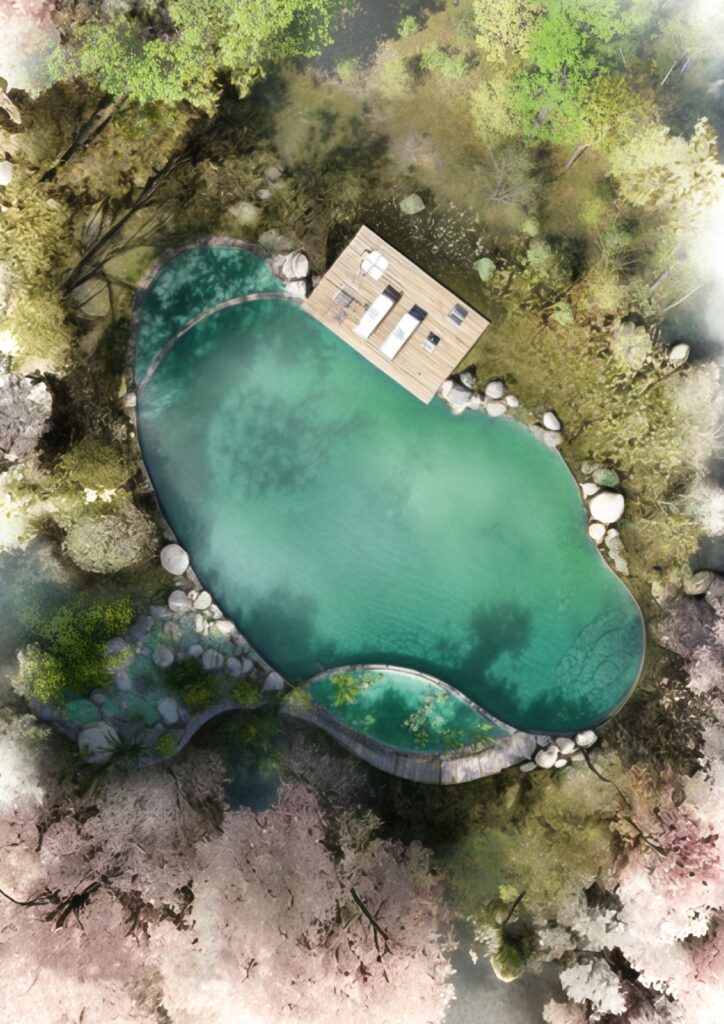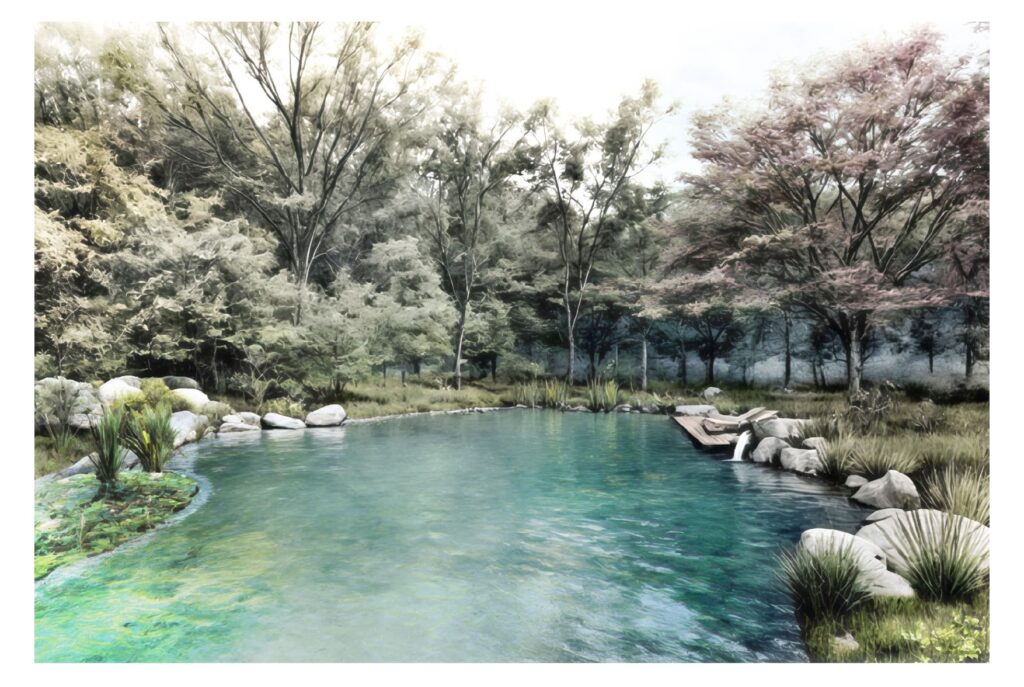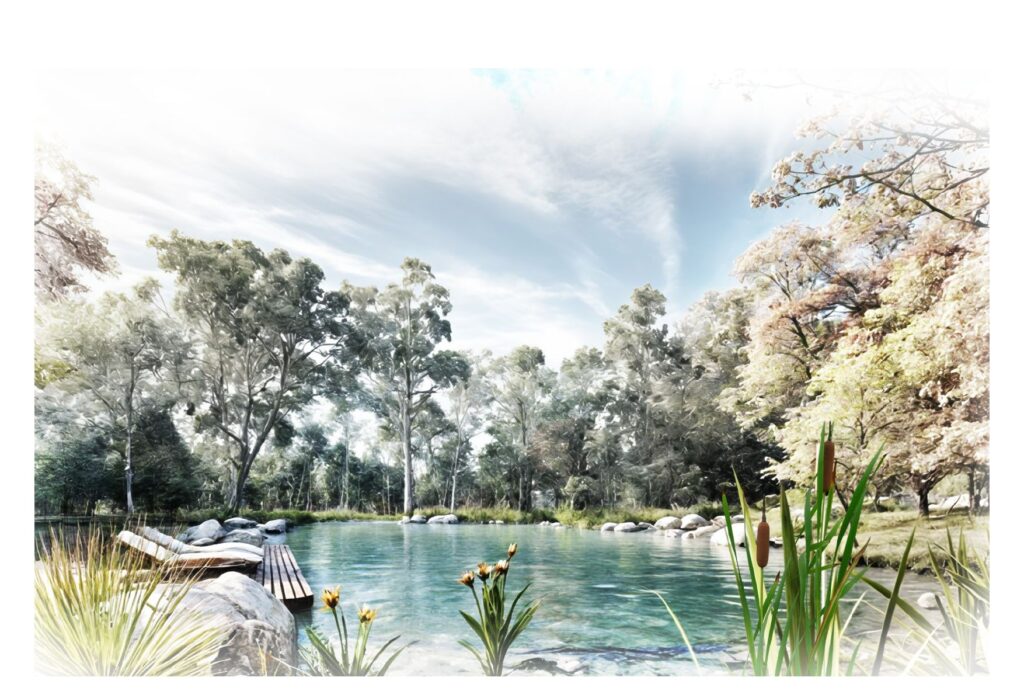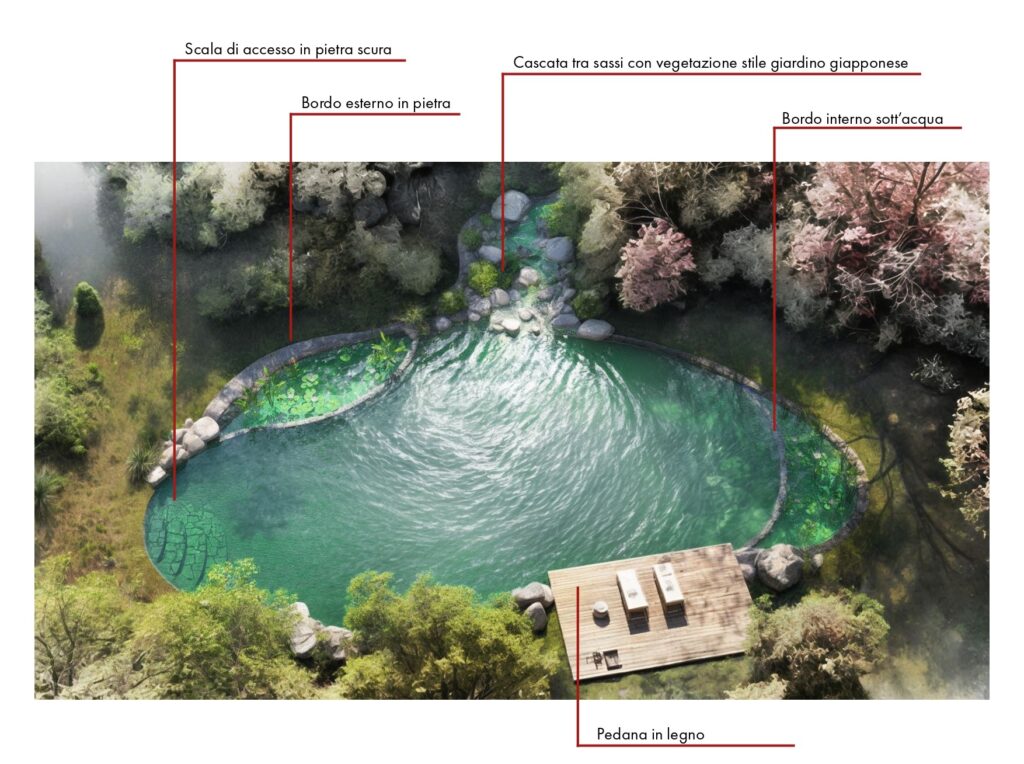Converting a natural pond with stagnant water into a swimmable pond presents an environmental and design challenge aimed at balancing biodiversity preservation with human use through sustainable remediation and redevelopment practices.
Results and Project Goals
A pond with poorly oxygenated water can become an unhealthy environment, promoting the proliferation of algae and harmful bacteria. The main goal is to restore the ecological conditions of the pond by improving water quality and creating a healthy, safe environment for swimmers.
The creation of a swimming pond relies on natural techniques that avoid chemical treatments, instead promoting biological processes for purification and natural filtration. To transform it into a swimmable pond, aquatic plants are used; their roots absorb excess nutrients and enhance natural oxygenation of the water.
Additionally, a technical system for circulation and aeration is installed to ensure continuous movement and additional oxygen supply, resulting in more effective purification. This combined approach guarantees clean, well-oxygenated water suitable for swimming while respecting the natural environment.
Adopted Methodologies
The remediation process involves removing accumulated organic debris over time. Subsequently, phytoremediation zones are created, where aquatic plants placed in suitable substrate play a crucial role in filtering water and absorbing excess nutrients.
Sustainable Redevelopment
To ensure sustainable management of the biological lake, eco-friendly solutions are implemented for water supply, utilizing an existing source, maintaining surrounding green areas, and promoting local biodiversity. The use of natural materials and low-impact techniques guarantees the durability of the intervention over time.
Biodiversity and Water Quality
A key aspect is the protection of biodiversity: the biological lake becomes a habitat for many species of plants, insects, amphibians, and birds, contributing to the conservation of local ecosystems. Through sustainable practices focused on preserving biodiversity and water quality, a regenerated natural environment is created that offers ecological and recreational benefits.
